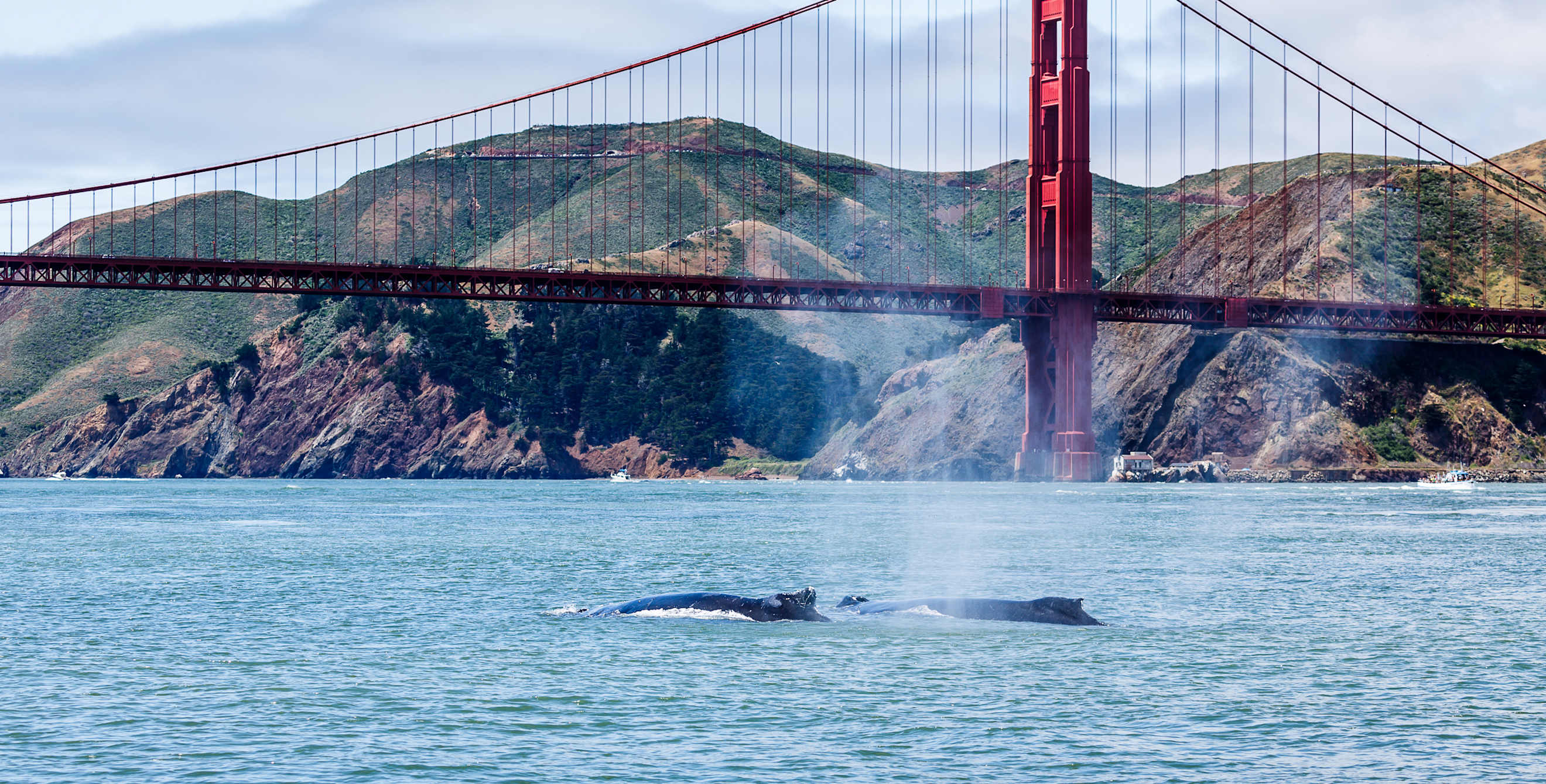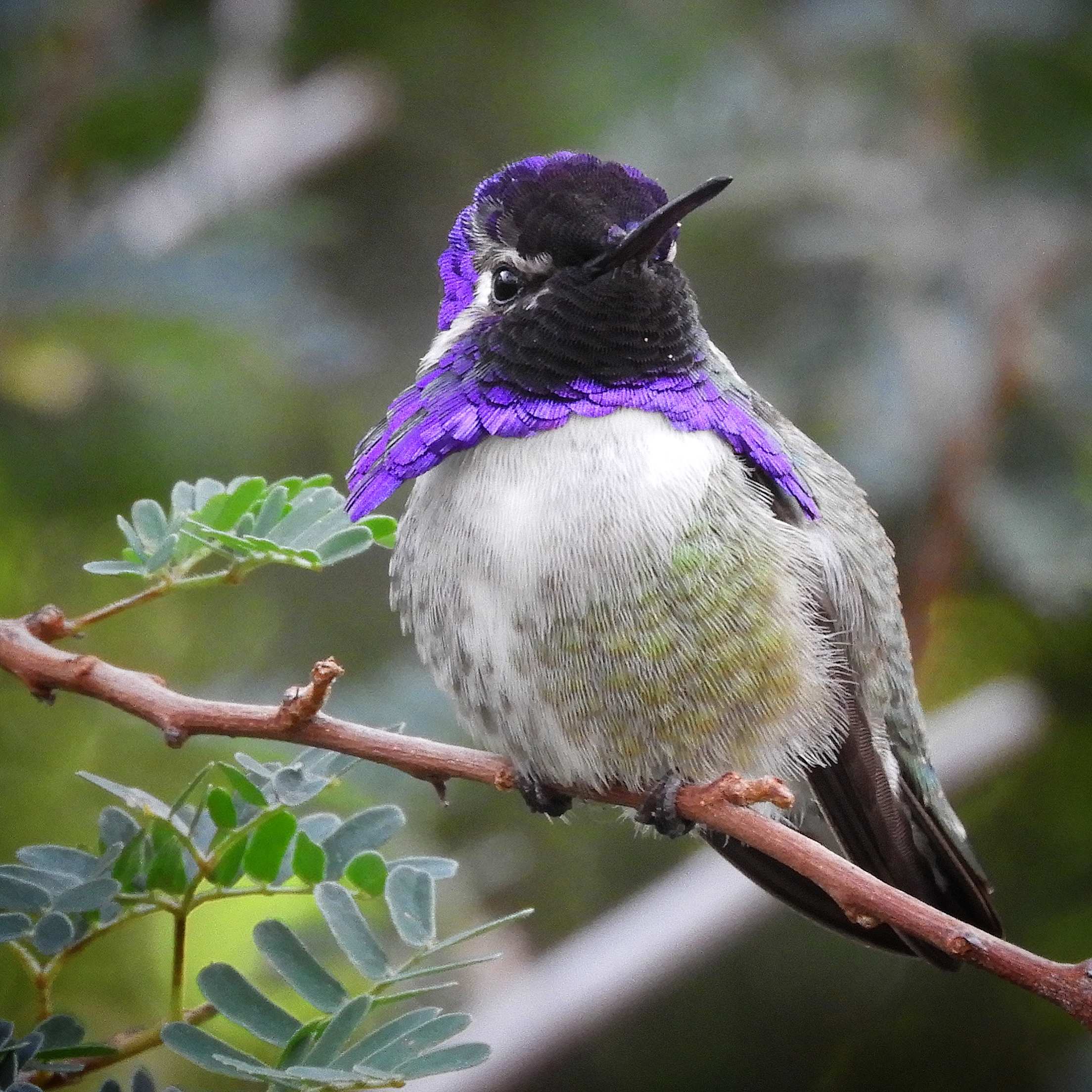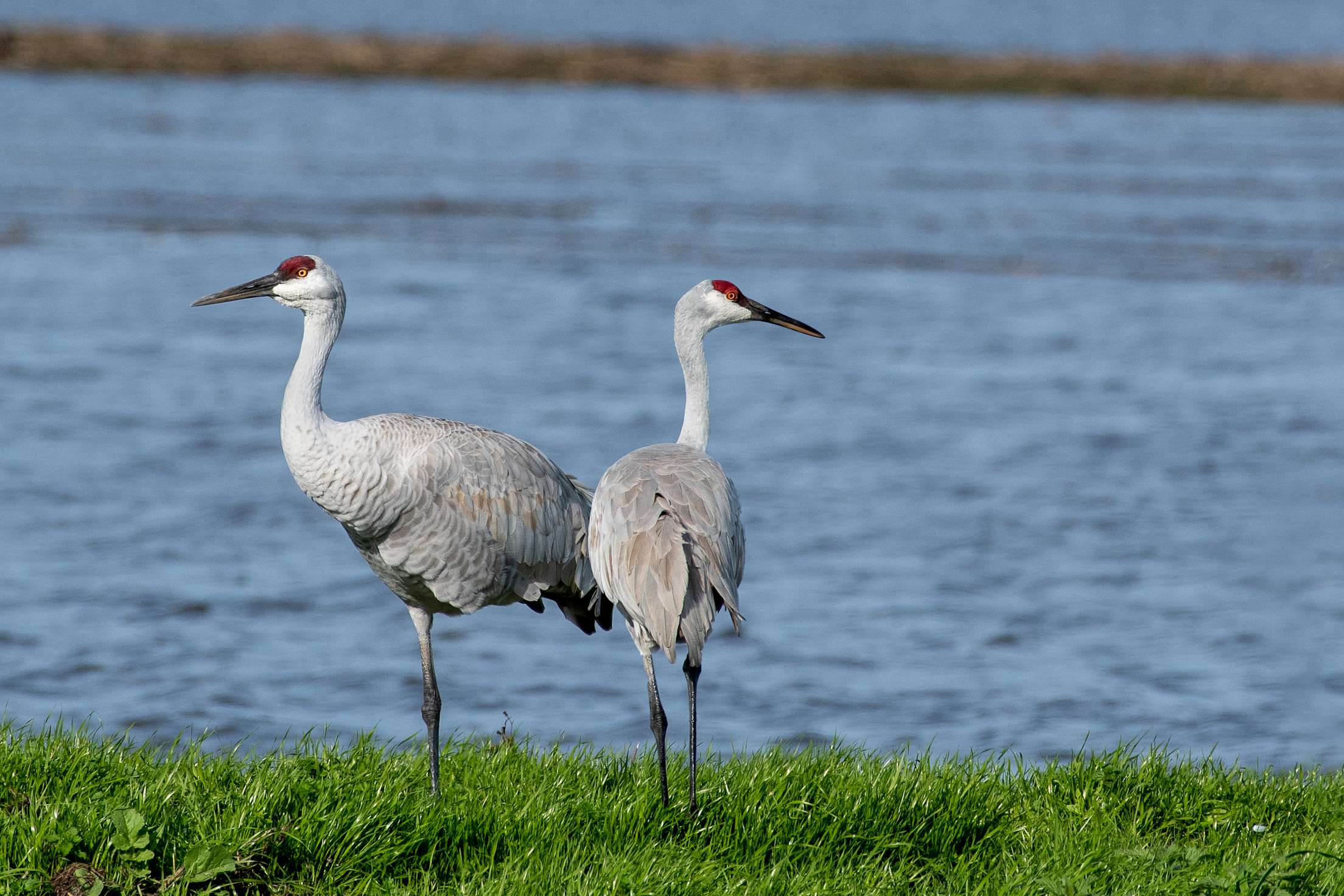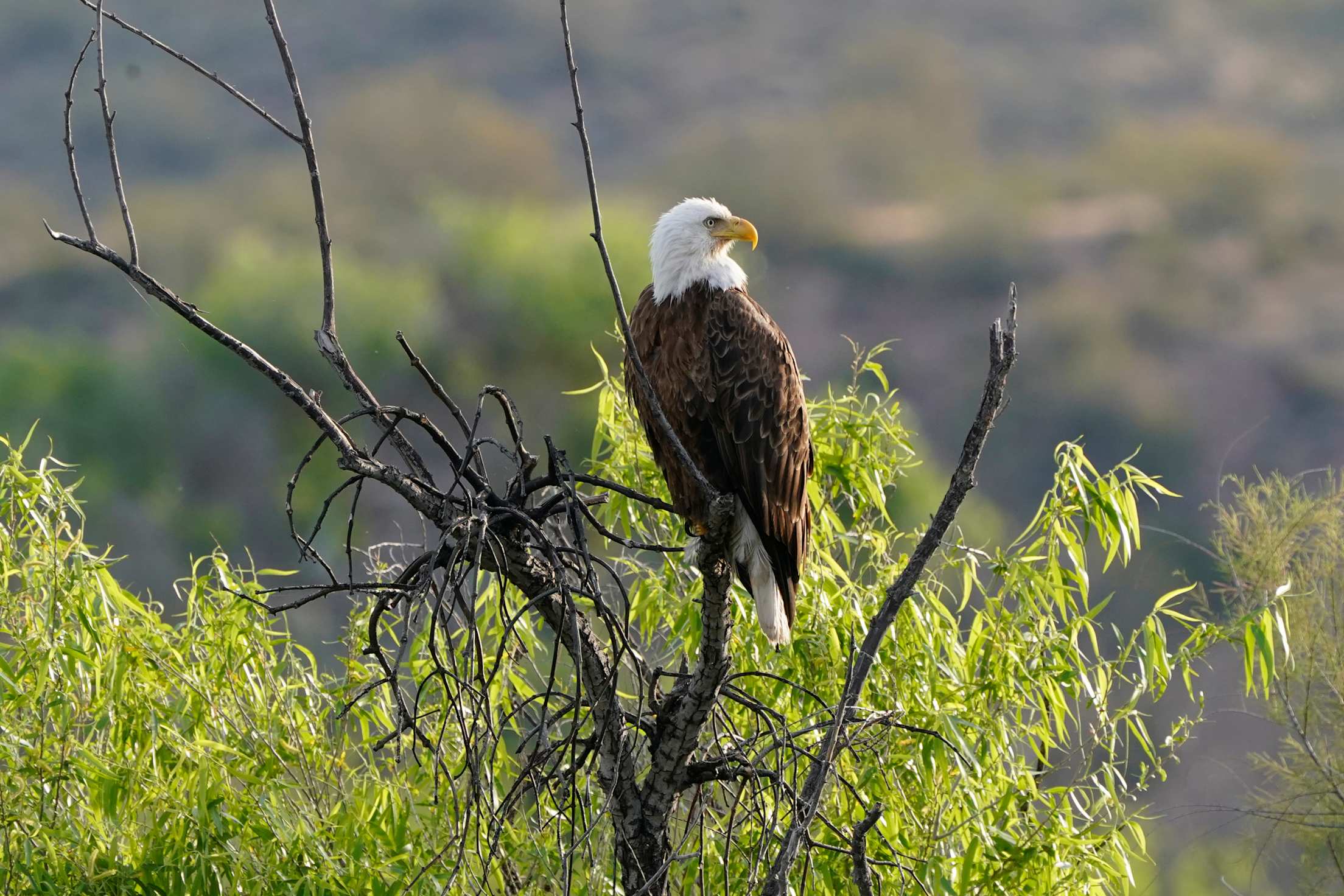
Must-See Wildlife Migrations in the West
Where to watch hummingbirds flutter, whales dine, and salmon prevail upstream.

From the gray whales that swim thousands of miles from Alaska to Baja California (and back!) to the bald eagles that overwinter in Arizona, nature is truly a sight to behold in the West. Seek out these seven wildlife migrations for an experience you aren’t soon to forget.
Gray Whales Along the California and Oregon Coasts
Witness one of the longest annual mammal migrations on the planet: Tens of thousands of eastern North Pacific gray whales, some reaching up to 50-feet-long and weighing as much as 45 tons, travel 10,000 miles round-trip from Alaska to Baja California each winter to mate and give birth. Recognizable by their mottled gray coloring, these enormous baleen (filter-feeding) whales hug the coastline of both Oregon and California on their journey, which begins in October and ends in March. They travel at an average of about five miles an hour and feed on plankton and small crustaceans found in shallow waters, which makes them relatively easy to spot. At Oregon’s Depoe Bay, thriving, food-filled kelp forests attract the hungry travelers (and the resident gray whales, a subset of the larger Pacific gray whale population, that often set up shop in June) and draw them closer to shore. In California’s Mendocino County, the Point Arena Light Station offers prime viewing from the top of the lighthouse tower (currently closed to the public) and the rugged peninsula surrounding it in late November through April. Further down the coast, Monterey County’s rich waters delight divers and whale watchers at Point Lobos State Natural Reserve, where you can often catch grey whales spouting from their duel blowholes December through May.

Hummingbirds in Southeast Arizona
Thousands of the world’s smallest birds make their way from Mexico to the southwestern United States each year to breed and spend their days feasting on nectar and insects. With both year-round residents and migrating visitors, southeast Arizona boasts one of the country’s most diverse array of hummingbird species. The purple-capped Costa’s hummingbird is partial to desert scrub, and is a regular sight around Tucson, typically from February to April. Look for black-chinned and broad-billed hummingbirds, as well as the rare blue-throated mountain-gem hummingbird, April through early October in the Huachuca Mountains, one of the region’s many Madrean Sky Islands. This biodiversity hotspot is shaped by sharp changes in elevation and made up of dozens of high-elevation woodland enclaves, surrounded by grasslands and deserts. Madera Canyon in southeast Arizona’s Santa Rita Mountains (another sky island) is also a hummingbird haven, with broad-billed and black-chin hummingbirds being the most frequent visitors, and the larger purple and green Rivoli’s hummingbirds often appearing in August and September.

Sandhill Cranes in California’s Central Valley
With their loud, long trumpeting calls, sandhill cranes are a noisy bunch, but they’re also remarkable to see. Greater sandhill cranes can grow to four-feet tall, and they are one of the world’s oldest living species of birds. You might spot them soaring through the air, often hundreds at a time, with their legs and necks outstretched and their wings reaching more than six feet, as they journey from Alaska. Once they arrive in California, they spend winter and spring gathering by the thousands to forage on bugs, seeds, and grain, and to roost in the seasonal wetlands and ricelands. The best times to see (and hear) them are at dawn and dusk in places such as Woodbridge Ecological Reserve in San Joaquin County, the wetlands of the Central Valley’s Cosumnes River Preserve, and the Sacramento-San Joaquin River Delta’s Staten Island.

Bald Eagles in Arizona
Central Arizona’s Salt and Verde rivers are home to a year-round population of desert nesting bald eagles, which have adapted themselves to the region’s often searing heat and low humidity. However, the state is also a rest stop for migratory bald eagles making their way south from northern spots, such as Utah and Idaho. These majestic birds of prey that were once on the brink of extinction start arriving around October and stick around through mid-March. Look out for them in the ponderosa pine forests around Mormon Lake, outside of Flagstaff, and along the shorelines of the nearby Upper Lake Mary and Lower Lake Mary. You may also spot them northeast of Phoenix in the woodlands around man-made Theodore Roosevelt Lake or hovering above its waters, where they feed on bass, carp, and catfish.

Salmon Run in California
Thousands of silvery salmon swim upstream from the salt waters of the Pacific, sometimes jumping and leaping to overcome rapids as they navigate using magnetic fields to return to the place where they were born. Once there, they spawn tiny offspring to continue the circle of life. California is home to both chinook and coho salmon. While the populations of each have declined drastically over the years due to climate change and other man-made factors, such as logging and the construction of dams, this shimmering spectacle remains. Coho salmon (smaller than their counterparts, and recognizable by their maroon to olive brown coloring) can be seen November through February in Marin County’s Lagunitas Creek, which runs among the lofty redwoods of Samuel P. Taylor State Park. Chinook is the largest species of Pacific salmon, and California's fall run typically enters the Sacramento River system beginning in late summer. They then swim their way up to tributaries like Battle Creek and the American River, where they start spawning by mid-October.

Elephant Seals along the California Coast
These blubbery marine mammals the size of sedans were once hunted to the brink of extinction for their oil-rich fat; however, their comeback has been truly remarkable. Unlike sea lions, who have longer hind flippers, elephant seals have short hind flippers for maneuvering themselves on land, so they use their front flippers and trunk to belly flop instead. Adult males sport the elongated trunk-like noses that have earned the entire species its name—making these striking creatures even more eye-catching. Smaller in size than their southern counterparts, which reside in sub-Antarctic and Antarctic waters, California’s northern elephant seal males can still weigh up to 5,000 pounds and reach up to 16-feet-long.
Elephant seals spend most of their time deep in Pacific waters, diving and foraging for squid and lanternfish. They return annually to the same breeding grounds. Two great places to spot them are Año Nuevo State Park, twenty-two miles north of Santa Cruz along Highway 1, and the Piedras Blancas Rookery in San Simeon on California’s central coast. While elephant seals are viewable year-round at both beaches, your best chance for spotting newborn pups is between December and February.

Elk in Wyoming
Both graceful in movement and regal in nature, elk are one of the largest species of deer. Each spring, thousands of these distinguished mammals make their way into Yellowstone National Park from surrounding lands to summer at higher elevations where they feed on shrubs and tree bark. The Greater Yellowstone Ecosystem is home to approximately 30,000 to 40,000 elk spread among multiple herds. You can often see them around dawn or dusk in the park’s Mammoth Hot Springs, as well as in Yellowstone’s Lamar Valley, a wildlife hub that’s also known for its bison, bears, and wolves.